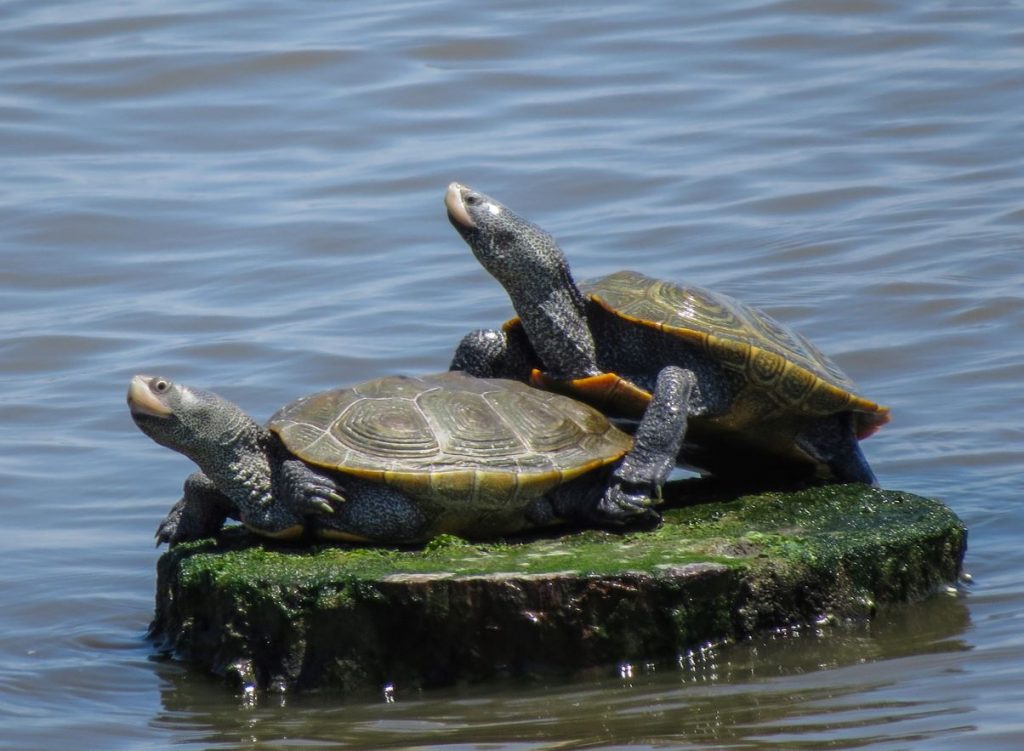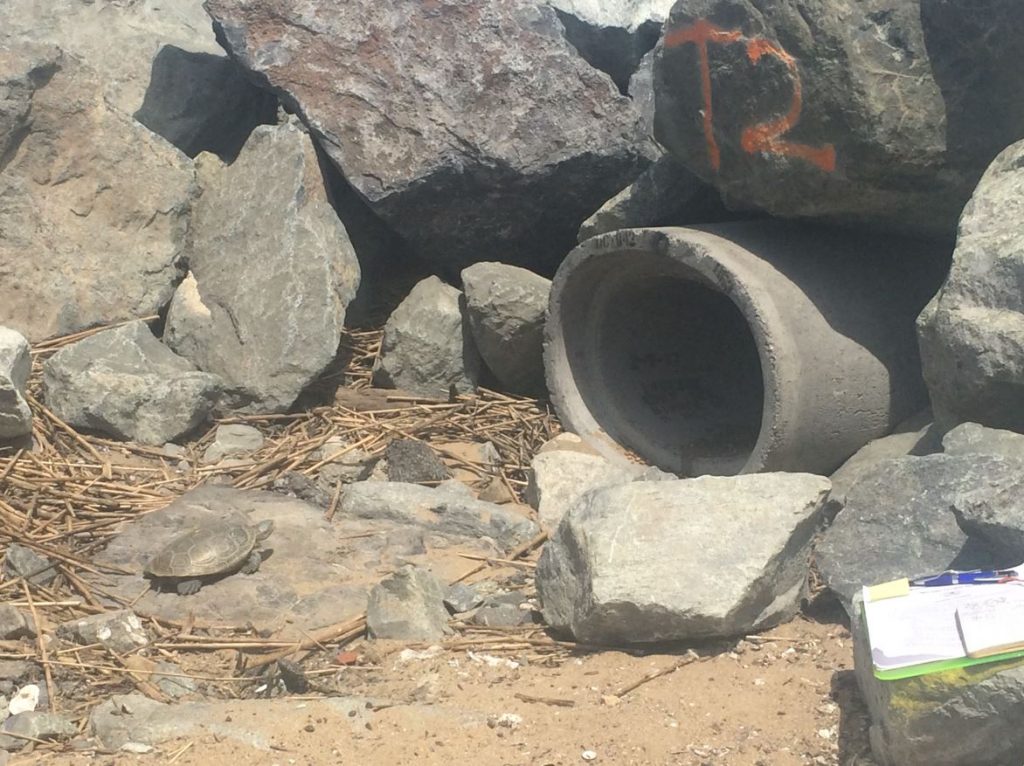By Nate Nazdrowicz
 Why did the turtle cross the road? More specifically, why do diamondback terrapins cross Port Mahon Road in Little Creek, Delaware? The answer: the female terrapins move from the Delaware Bay to nesting sites near Port Mahon in Kent County every summer, but they face real danger due to vehicles on Port Mahon Road. That’s where Operation Terrapin Rescue comes in – to help them do this safely.
Why did the turtle cross the road? More specifically, why do diamondback terrapins cross Port Mahon Road in Little Creek, Delaware? The answer: the female terrapins move from the Delaware Bay to nesting sites near Port Mahon in Kent County every summer, but they face real danger due to vehicles on Port Mahon Road. That’s where Operation Terrapin Rescue comes in – to help them do this safely.
Operation Terrapin Rescue is sponsored by the Department of Natural Resources and Environmental Control’s Division of Fish and Wildlife, involving volunteers that help the terrapins navigate across the road, while also collecting accurate and valuable data on the terrapins’ movements.
Diamondback terrapins, which are on the Delaware Species of Greatest Conservation Need list, live in estuaries and tidal marshes along Delaware’s coast. Although they spend the majority of their life in brackish (a mix of salt and fresh water) habitats, females travel to land to find nesting sites in late May through July.
Port Mahon Road, which snugly borders the Delaware Bay, is one of the many places terrapins nest where the unvegetated, sandy roadsides provide great nesting habitat for diamondback terrapins.
 In 2015, large rocks were placed along sections of Port Mahon Road to protect it from erosion. Unfortunately, the rocks created a barrier for the terrapins and they got trapped within the rocks as they came to nest. The rocks also blocked their path back to the bay, causing terrapins to spend more time in the road increasing their vulnerability to being struck by vehicles.
In 2015, large rocks were placed along sections of Port Mahon Road to protect it from erosion. Unfortunately, the rocks created a barrier for the terrapins and they got trapped within the rocks as they came to nest. The rocks also blocked their path back to the bay, causing terrapins to spend more time in the road increasing their vulnerability to being struck by vehicles.
Operation Terrapin Rescue was launched that year to help terrapins negotiate the rocks and vehicle hazards. Then, prior to the 2017 nesting season, the Delaware Department of Transportation added two “turtle tunnels.” These wide concrete pipes run under the rocks to provide the terrapins a safe avenue to make their way to and from the bay and nesting areas. However, since Port Mahon Road is approximately two miles long, volunteers are still needed to help the turtles navigate their way safely at locations away from the turtle tunnels.
 Females excavate nests in the unvegetated patches of sandy soil above the high tide line. Their young, called hatchlings, move to, and spend their first year in the wrack line, a coastal area where organic material and other debris is deposited at high tide. This zone allows marine resources to enter a terrestrial system providing food and habitat for a variety of coastal organisms. The hatchlings might also spend time in emergent areas of the marsh – wetlands that provide narrow- and broad-leaved herbs and grass-like plants as well as floating herbs. The hatchlings do not use the bay because they are too vulnerable to predators in open water.
Females excavate nests in the unvegetated patches of sandy soil above the high tide line. Their young, called hatchlings, move to, and spend their first year in the wrack line, a coastal area where organic material and other debris is deposited at high tide. This zone allows marine resources to enter a terrestrial system providing food and habitat for a variety of coastal organisms. The hatchlings might also spend time in emergent areas of the marsh – wetlands that provide narrow- and broad-leaved herbs and grass-like plants as well as floating herbs. The hatchlings do not use the bay because they are too vulnerable to predators in open water.
Maturity takes three to seven years. Juveniles and adults are aquatic and live in the tidal zone of the marsh and associated marsh channels. Generally, they will navigate through waterways in the marsh to access the bay and will not travel across land unless they are searching for nest sites.

The terrapins need your help and now is the time to be ready. When you volunteer, you sign up for specific three-hour shifts that are tied to high tide. You walk or drive Port Mahon Road looking for terrapins that need help navigating around the rocks. You also record the number of turtles you observe and their locations on a datasheet.
Twenty-two volunteers supported Operation Terrapin Rescue last year, recording a total of 63 turtles. Unfortunately, 12 of these had been killed by vehicles and four were found dead in the rocks. But 29 terrapins were moved by volunteers off the roadway and 14 were rescued from the rocks. An additional four turtles were observed nesting.
New volunteers must complete a Volunteer Application Form. For more information, contact Nate Nazdrowicz at 302-735-8688 or nathan.nazdrowicz@delaware.gov, or visit the Operation Terrapin Rescue web page.
Nate Nazdrowicz is the state’s herpetologist within the DNREC Division of Fish and Wildlife.